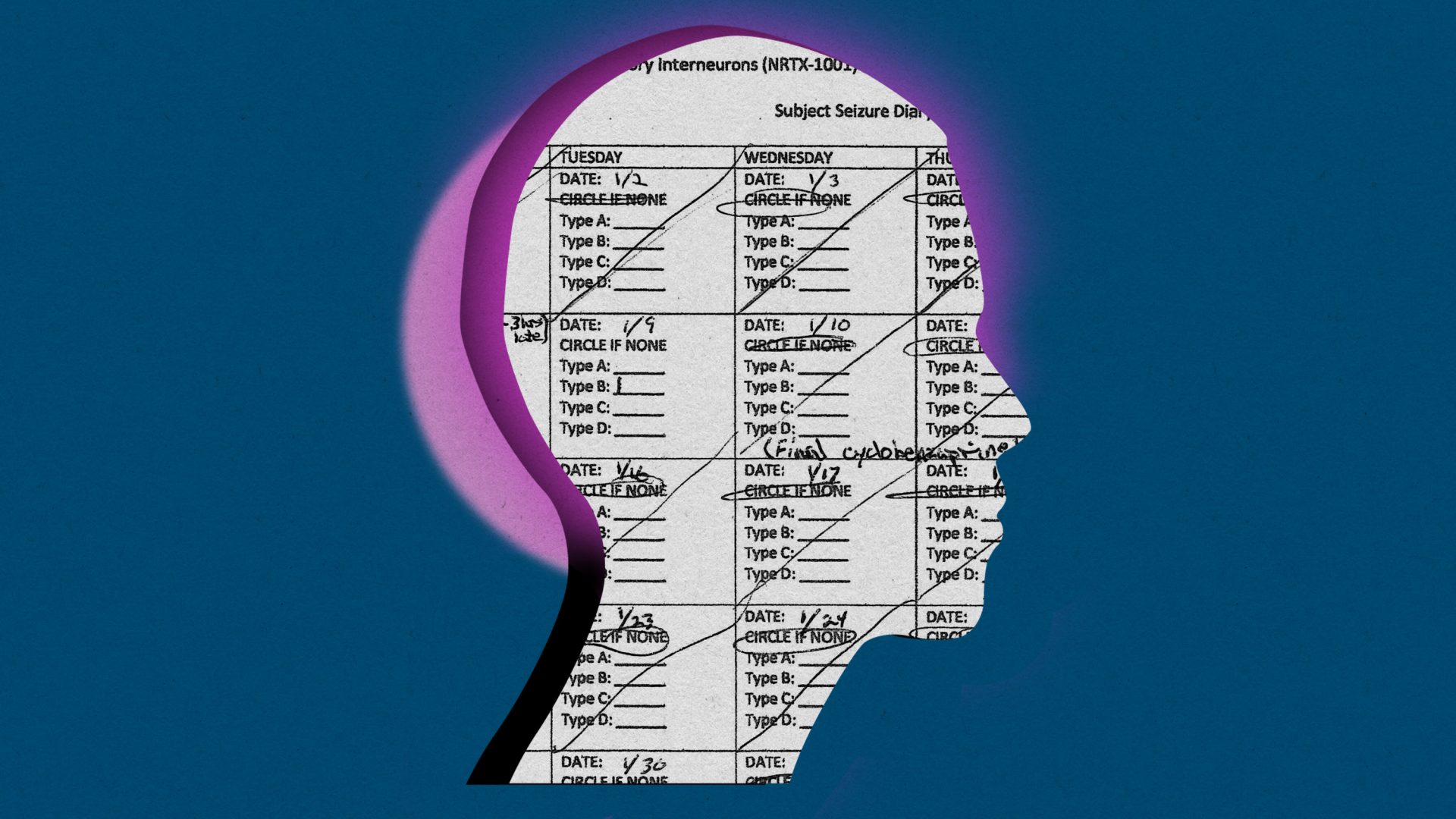“It’s early, but it could be restorative,” says Cory Nicholas, a former laboratory scientist who is the CEO of Neurona. “I call it activity balancing and repair.”
Starting with a supply of stem cells originally taken from a human embryo created via IVF, Neurona grows “inhibitory interneurons.” The job of these neurons is to quell brain activity—they tell other cells to reduce their electrical activity by secreting a chemical called GABA.
Graves got his transplant in July. He was wheeled into an MRI machine at the University of California, San Diego. There, surgeon Sharona Ben-Haim watched on a screen as she guided a ceramic needle into his hippocampus, dropping off the thousands of the inhibitory cells. The bet was that these would start forming connections and dampen the tsunami of misfires that cause epileptic seizures.
Ben-Haim says it’s a big change from the surgeries she performs most often. Usually, for bad cases of epilepsy, she is trying to find and destroy the “focus” of misbehaving cells causing seizures. She will cut out part of the temporal lobe or use a laser to destroy smaller spots. While this kind of surgery can stop seizures permanently, it comes with the risk of “major cognitive consequences.” People can lose memories, or even their vision.
That’s why Ben-Haim thinks cell therapy could be a fundamental advance. “The concept that we can offer a definitive treatment for a patient without destroying underlying tissue would be potentially a huge paradigm shift in how we treat epilepsy,” she says.
Nicholas, Neurona’s CEO, is blunter. “The current standard of care is medieval,” he says. “You are chopping out part of the brain.”
For Graves, the cell transplant seems to be working. He hasn’t had any of the scary “grand mal” attacks, that kind can knock you out, since he stopped drinking. But before the procedure in San Diego, he was still having one or two smaller seizures a day. These episodes, which feel like euphoria or déjà vu, or an absent blank stare, would last as long as half a minute.
Now, in a diary he keeps as part of the study to count his seizures, most days Graves circles “none.”

